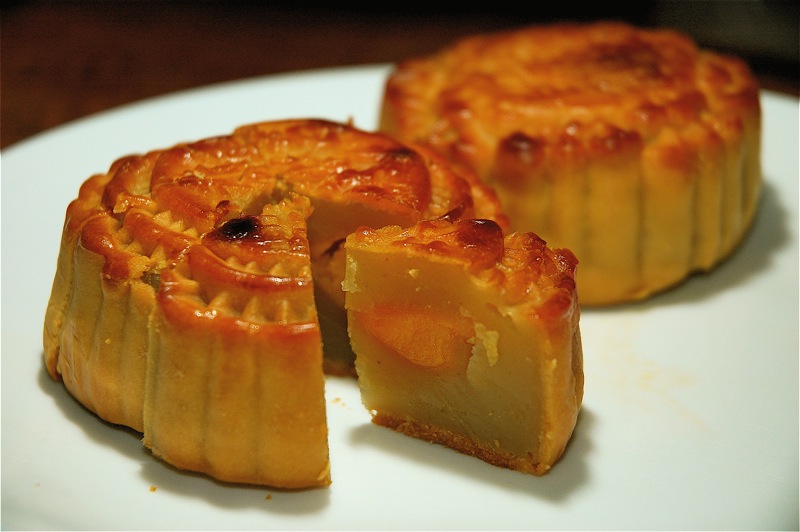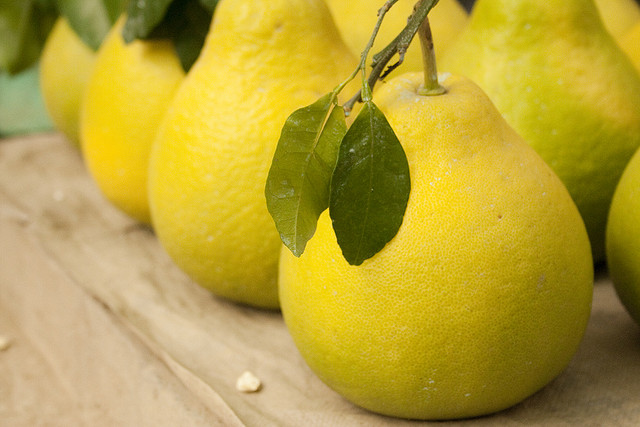Celebrating the Mid-Autumn Festival in Taiwan

Mid-Autumn Festival in Taiwan is a beloved time of year
If you teach English in Taiwan, you’ve certainly heard about it and are likely looking forward to your first long weekend/vacation during the school year.
Maybe someone has invited you to a barbecue? Or maybe you’ve received some mooncakes or a strange-looking light-green fruit as a gift. Since Mid-Autumn Festival in Taiwan is one of Taiwan’s most important holidays, it’s worth taking some time to look at the traditions and history that surround this festival.
A beloved festival around the island, Mid-Autumn Festival in Taiwan is celebrated for many reasons. Not only is it the first festival that teachers can celebrate in the first part of the school year, but it is a time for families and friends to come together in many meaningful ways. A great number of our teachers compare it to Thanksgiving. This makes sense, as we are celebrating to give thanks for a good harvest. We are also celebrating our time with loved ones.
When is Mid-Autumn Festival celebrated?
The Moon Festival is celebrated on the 15th day of the 8th month of the Chinese lunar calendar. In ancient China, it began in part as a day to give thanks for the harvests of summer, and also to appreciate the beauty of the full moon. The festival is also a time for telling, re-telling, and remembering the legends associated with the moon. The most popular of these is the legend of Chang’e.
According to the legend, there was once a time when there were 10 suns in the sky. Chang’e’s husband, Hou Yi, was a great archer who saved the Earth from being scorched by shooting down 9 of the suns with his arrows. As a reward, the gods gave him a pill that would make him immortal.
Chang’e accidentally swallowed the pill herself and began floating upwards. She didn’t stop until she landed on the moon, where she has been trapped ever since. The moon is at its brightest and fullest during the Mid Autumn festival. People say this is when Chang’e, still living on the moon, is at her most beautiful.
Mid-Autumn Festival in Taiwan is most closely associated with having a barbecue and gazing at the moon
It’s unclear exactly how barbecues have become such an important part of the festival in Taiwan, though. According to one story, it all started with an ad campaign by a company that sold—what else? Barbecue sauce! That ad campaign was so successful at promoting the Mid-Autumn Festival as the best time for a barbecue that it has become part of family traditions.
Regardless of its origin, Mid-Autumn’s barbecues bring family and friends together. In the cities, you’re sure to see small barbecue pits set up in rooftops, sidewalks, and in parks. Many people return to their family’s home in the countryside, as well, to reunite over a barbecue feast.
Outdoor barbecues have become a popular affair for friends and family in Taiwan to gather and enjoy each other’s company. In 2011, the government in Taipei designated 11 riverside parks to accommodate outdoor barbecue sites for the public.
Moon cakes are another must-have.
Moon Festival Festival is celebrated in many Asian countries
Each country has its own unique traditions.
According to folk tales, Moon cakes have been associated with the Mid Autumn Festival since the 1300s. When China was living under Mongol rule, a revolutionary used moon cakes to hide a secret message, telling China’s people to rise up against the Mongol invaders on the 15th day of the 8th lunar month, the same day as the Mid-Autumn Festival. This uprising led to the overthrow of the Mongol’s Yuan Dynasty and the founding of the Ming Dynasty.
These small, round pastries have a thin, flaky crust surrounding a core of various fillings. Some of the common fillings are sweetened red beans, sweet potatoes, taro paste, lotus seed paste, nuts, and fruit. Of course, the popularity of mooncakes means that you can find just about any flavor you want. Chocolate, coffee, ice cream, and green tea are some of the more popular modern fillings. Don’t be surprised if you find a salted duck egg yolk cooked into the middle of a mooncake—this symbolizes the full moon.
And what about pomelos?
Pomelos are large, pear-shaped yellow or light-green fruit that you see all over the place at this time of year? Those are pomelos. Pomelos are the largest citrus fruit, reaching as large as 12 inches in diameter! With a light flavor similar to a sweet grapefruit, they pair perfectly with mooncakes. You might even see people putting the pomelo rinds on their heads after eating the fruit.
This tradition arose because the Chinese name for pomelos, you zi (柚子), sounds the same as the words for “prayer for a son.” People hope that if they put the light-colored rinds on their heads, Chang’e, looking down from her home on the moon, will be able to see them better and will answer their prayers.
With the Mid Autumn Festival just on the horizon, make sure you save plenty of room for mooncakes, pomelos and, of course, a delicious barbeque!





2 Responses
[…] origins of this festival are rooted in the Chinese celebrations of the moon. The name ‘mid autumn festival’ comes from the time that the festival takes place. This festival falls in the middle of autumn […]
[…] dances and other cultural performances. Our staff have already written several articles about celebrating Moon Festival in Taiwan. It really is a joyous and fun time of […]